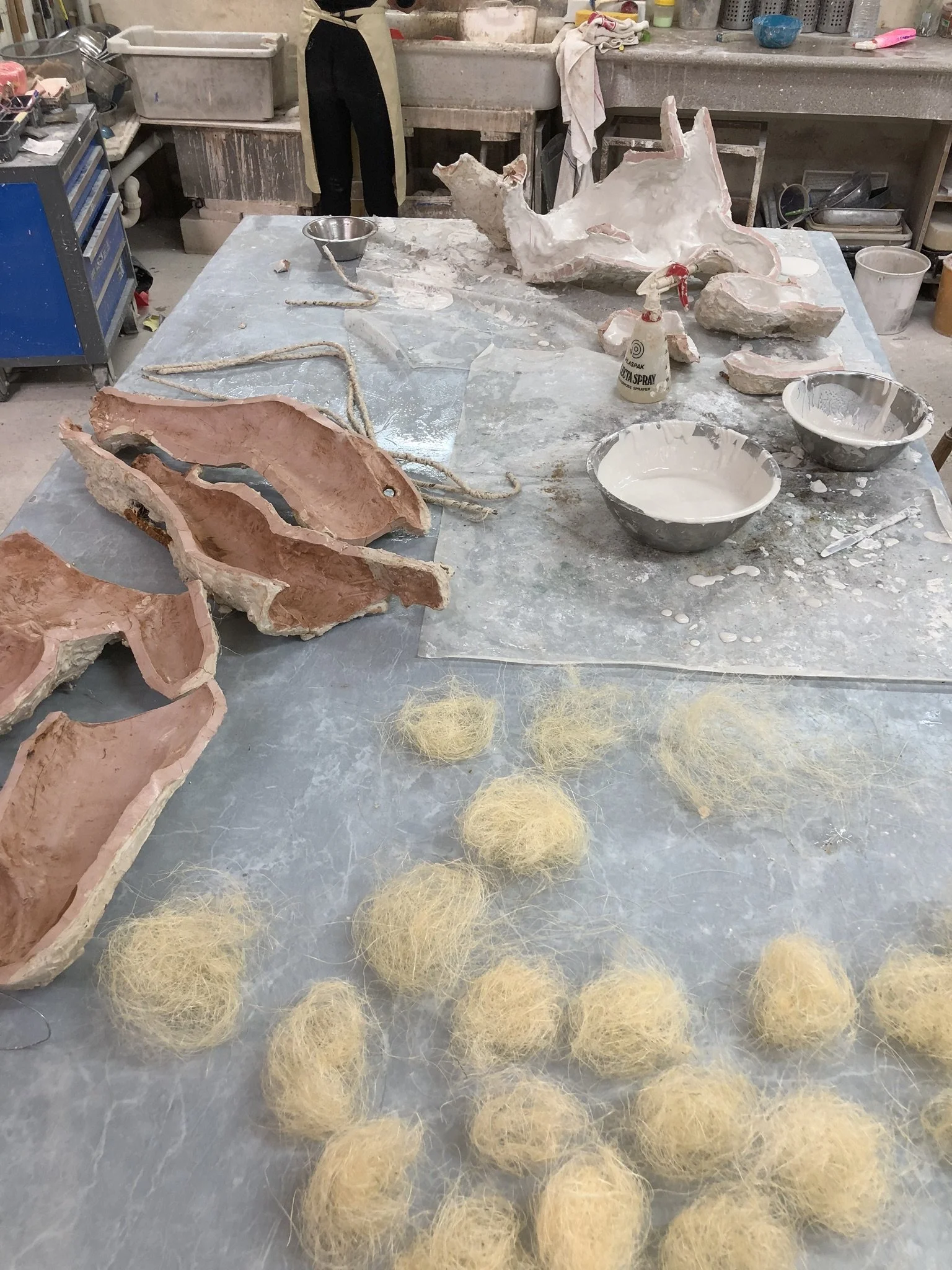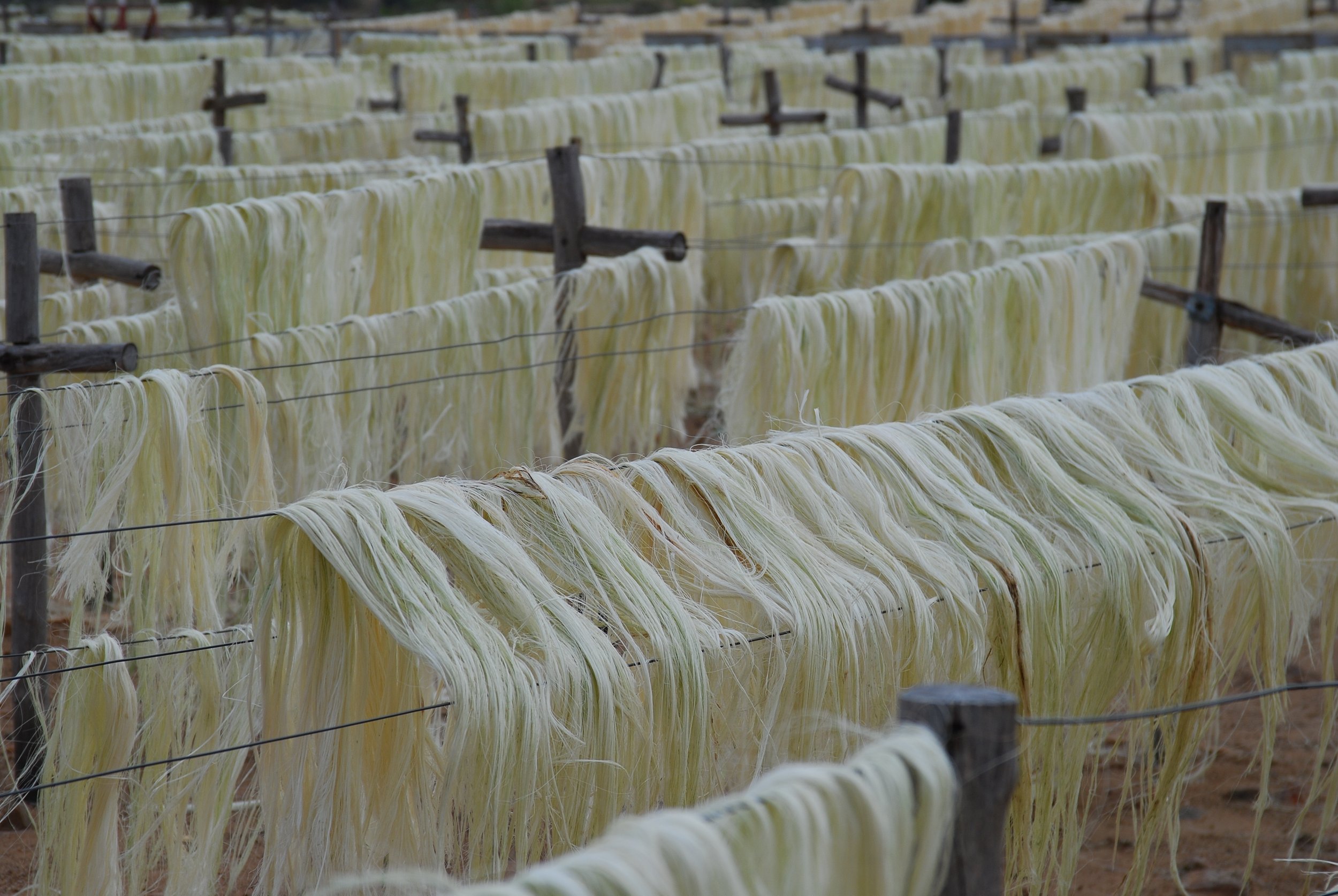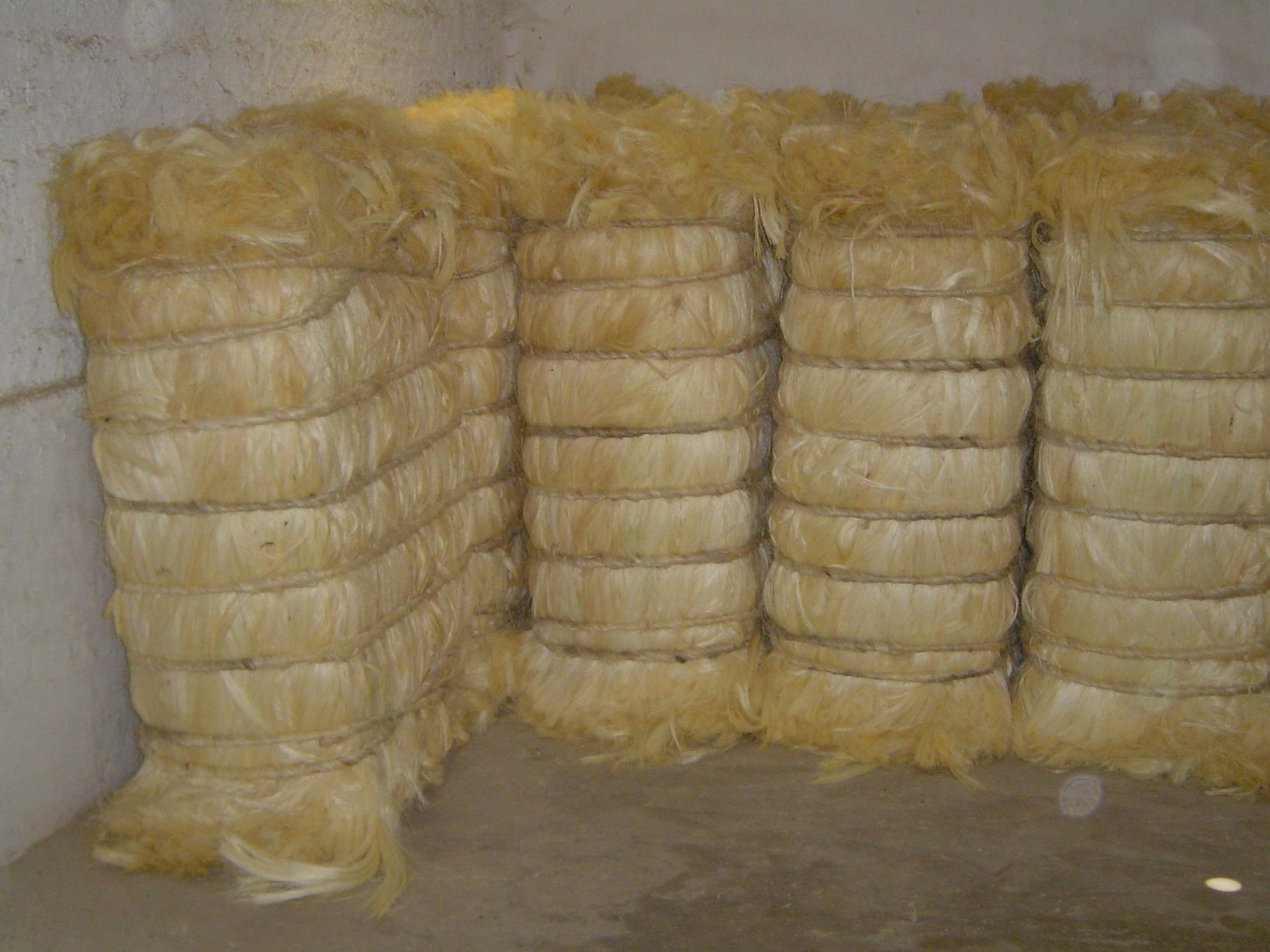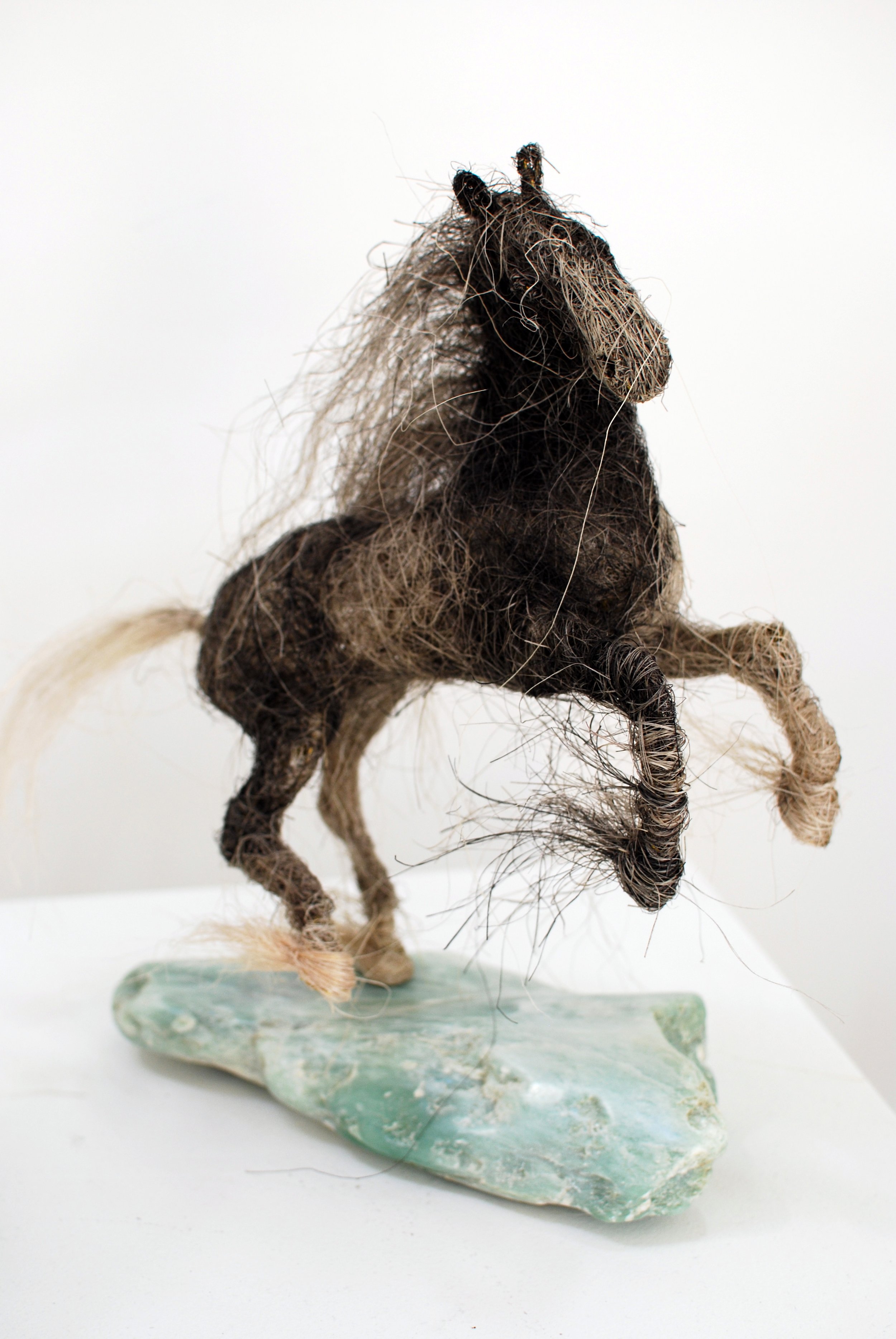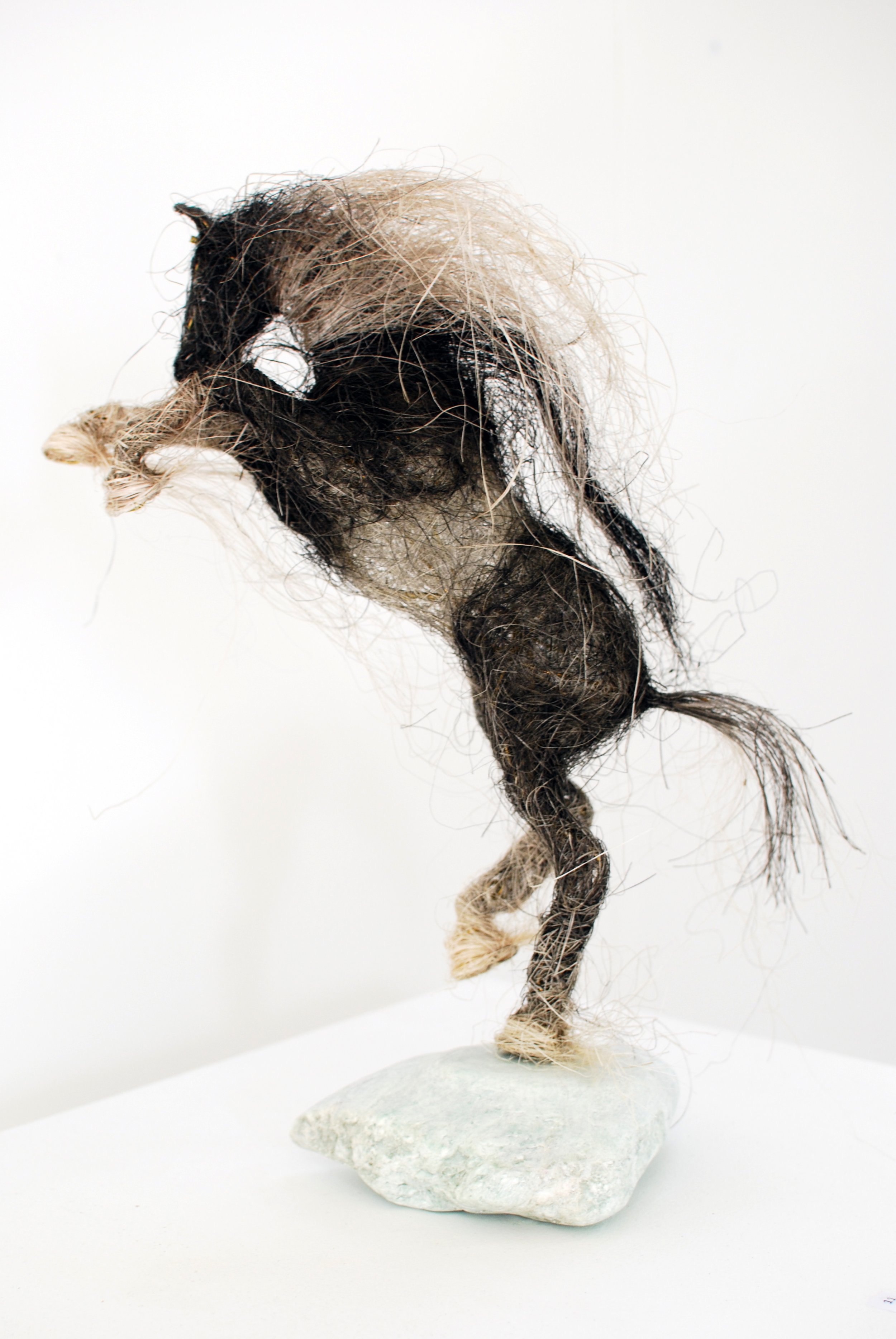Be Inspired: Materials Under the Microscope – Sisal
In this edition of Materials Under the Microscope we once again move away from stone to look at one of the more mysterious (and hard to find!) materials used at TBSSS: sisal, or sisal fibre. Students at TBSSS and sculptors may be familiar by using it as reinforcing whilst casting their sculpture, or from simply seeing it stored in the big black tub next to the plaster bench, or in the many large cardboard boxes of it located on shelves around the School. The reason there is so much of it is that it’s very hard to get. The last time the School purchased it in 2016 we had to order it from the United States in bulk (100 kgs of it!).
So what is sisal, where does it come from, and why is it used in sculpture?
Answering this question took me to the most unlikely of places: the Oxford Botanic Gardens. Like many of the cultural institutions in Oxford, such as the Natural History Museum, the gardens in Oxford are the oldest scientific gardens in the United Kingdom – established in 1621. The gardens are situated on the River Cherwell, between the vast expansive grounds of the two geographically largest colleges, Christ Church College and Magdalen College. At the time of the gardens’ conception, the land was owned by Magdalen College, but had previously been a Jewish cemetery until the late 13th century, until their expulsion from Oxford in 1290. This unfortunate history is acknowledged by a memorial immediately outside the Gardens’ entrance.
The Gardens are rich with history. It was these gardens which featured in Evelyn Waugh’s Brideshead Revisited when Sebastian insists that Charles must ‘see the ivy’ (if you haven’t seen the BBC series, you simply must!). It was also here that Charles Lutwidge Dodson (otherwise known as Lewis Carroll) used to play with the famous Liddell children – the inspiration for Alice of Alice in Wonderland. JRR Tolkien, too, was a frequent visitor. But enough about literature!
The Gardens are home to over 5,000 species of plant, and even hosts a modest Australian and New Zealand collection. For me, however, the real highlight was visiting the various themed greenhouses that sit immediately alongside the river. Connected by a side tunnel, each greenhouse houses a different category of flora: there is a fern house, a carnivorous plant house, an alpine house, and a lily house! Each house is immersive: visitors get ‘up-close-and-personal’ with the plants. One unavoidably brushes against them, pushes through them, and some you can even touch! It’s a marvellous experience. Although since rebuilt, the old lily house featured in Sir John Tenniel’s original illustrations of Alice’s Adventures in Wonderland.
It was in the greenhouse entitled the Arid House that I found the sisal plant. That’s right – sisal is a plant!
Sisal, or Agave sisalana, is plant, native to Mexico, that flourishes under arid conditions. I found it alongside various succulents and cacti. Since its discovery, it has been successfully cultivated in many other countries. Originally used by central and South American civilisations to make clothes and parchment, The plant consists of rosette a palm-tree-esque base from which a circular arrangement of sharp, broad leaves protrudes. The leaves are fibrous, containing as much as many as 900-1100 fibres each. Many materials are made by such fibrous plants, including linen, which is made from the fibres of the flax plant.
Because of its strength and durability, the sisal fibre is uniquely suited to making rope, binding twine, reinforcing twine, unique types of paper, and even carpet! Sisal farms are therefore common in Central and South American, and in Africa, and over 210,000 tonnes of sisal is produced each year!
In order to extract the fibre, the raw leaves go through a process called decortication, where leaves are pummelled and the residue scraped away so that only fibres remain. The resulting fibres are then dried (either in the sun or using a machine), cleaned, and then baled before being sold.
So what use is sisal in sculpture?
Given its use in rope and reinforcing twine, it’s perhaps no surprise that its use in sculpture is to reinforce a cast, in order to ensure its structural integrity. It can also have the same use in direct plaster sculpture. If the sisal fibres protrude from the final product, they can be burnt off. Those who study at TBSSS may be familiar with the blow-torches located in the Studio for this purpose.
But that’s not all sisal can be used for. Some artists choose to incorporate sisal as a key feature in their sculptures. One TBSSS sculptor Jules Jones, creates beautiful sculptures of horses, uses sisal amazingly effectively to represent the horse’s own hair. The sisal along with the form of the horses, give the sculptures wonderful energy and movement.
So now you know where sisal comes from!
Psst! Fascinated with sisal and want to try it out at home? TBSSS sells it for $55 per1kg bag. Just ask Lucinda and Mel in the office!
Next edition: we finish off the TBSSS materials series by looking at our final stone – alabaster, and its many different forms and colours. Stay tuned…
Images:
(1) Dried sisal fibre in the TBSSS Studio, ready to be used (source TBSSS).
(2) L: The Dandy Gateway/Arch at the main entrance to the Gardens – a great example of Baroque architecture (source: Wikimedia commons); R: A view of Magdalen Tower (part of Magdalen College) from the centre of the Gardens (source: Wikimedia commons).
(3) L: The side passageway connecting the various greenhouses (source: Haarkon blogs: https://www.haarkon.co.uk/explore-blog/university-of-oxford-botanic-garden-oxford-england); R: The old lily house, as featured in Charles Tenniel’s original illustrations for Alice’s Adventures in Wonderland. This panel is entitled ‘The Queen’s Croquet Ground’ (source: Wikimedia commons).
(4) L: The sisal plant (Agave sisalana) (source: Wikimedia commons) R: An old black and white photograph of a sisal plantation/farm in Yucatan, Mexico (source: Wikimedia commons).
(5) L: Sisal fibres being sun-dried at a farm in Madagascar (source: Wikimedia commons) R: Baled sisal (source: Wikimedia commons).
(6) Sculpture by Jules Jones, sisal over brass wire on soapstone (source TBSSS).
Words by William Jackson

